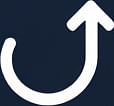Self-Discipline Techniques and Exponential Feedback Cycles
 by Thaddeus Blanda
by Thaddeus Blanda
Explore how self-discipline techniques foster exponential feedback cycles in personal development, business, and technology. These methods build habits that lead to sustained growth, offering tools for entrepreneurs and scientists to achieve lasting progress.

Self-discipline techniques play a key role in creating patterns of growth that accelerate over time. For instance, consistent daily routines can lead to feedback cycles where small improvements compound into significant changes.
In personal development, building habits through self-discipline involves setting clear goals and tracking progress. One effective method is the Pomodoro technique, which breaks work into focused intervals followed by short breaks. This approach helps maintain energy and prevents burnout, allowing individuals to sustain efforts that generate exponential growth in skills and achievements.
Another technique is habit stacking, where new behaviors are linked to existing ones. For example, pairing exercise with morning coffee can make physical activity a natural part of the day. Over time, these habits form loops that reinforce motivation and performance, turning routine actions into drivers of long-term success.
Shifting to business, self-discipline techniques can transform operations and strategy. Leaders who prioritize daily reviews of key metrics ensure that decisions align with objectives. This practice creates feedback cycles where data insights lead to adjustments, fostering innovation and efficiency in teams.
In sales, for example, regular practice of negotiation skills through role-playing builds confidence and expertise. As results improve, the positive outcomes encourage further refinement, demonstrating how discipline in professional settings can lead to exponential growth in revenue and market presence.
Technology offers unique opportunities for applying self-discipline. Developers who commit to regular code reviews and learning sessions maintain high standards in their work. These disciplined practices create feedback cycles where errors are quickly identified and fixed, enhancing product quality and reliability.
In software development, agile methodologies emphasize iterative progress. By adhering to daily stand-ups and sprint reviews, teams can adapt rapidly to challenges. This disciplined approach ensures that projects evolve through continuous improvement, turning incremental updates into substantial advancements.
Benefits of Integrating Self-Discipline
Integrating these techniques across areas provides multiple advantages. In personal development, individuals report higher levels of satisfaction and resilience. For business professionals, disciplined strategies reduce risks and increase adaptability. Scientists and innovators find that routine experimentation accelerates discoveries.
To implement self-discipline effectively, start with simple goals. Create a list of actionable steps:
- Define specific, measurable objectives.
- Schedule regular check-ins to monitor progress.
- Adjust strategies based on outcomes.
This structured process forms the foundation for feedback cycles that amplify results. Over weeks and months, the compounding effect becomes evident, as initial efforts lead to greater efficiency and innovation.
Real-World Examples
Consider a startup founder who applies self-discipline to product development. By dedicating time each week to user feedback, the founder refines features based on real insights. This cycle of testing and iteration drives product improvements, attracting more users and investment.
In personal contexts, an individual aiming for fitness goals might track workouts and nutrition daily. As physical health improves, the person gains more energy for other pursuits, creating a loop that enhances overall well-being and productivity.
The intersection of self-discipline and feedback cycles extends to broader impacts. In technology firms, employees who maintain disciplined learning paths stay ahead of trends, contributing to company success. This ripple effect underscores the value of consistent effort in driving collective progress.
Ultimately, the application of these techniques requires commitment and reflection. By focusing on sustainable practices, individuals and organizations can harness the potential of feedback cycles to achieve remarkable outcomes.
